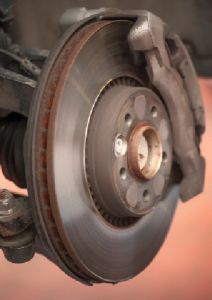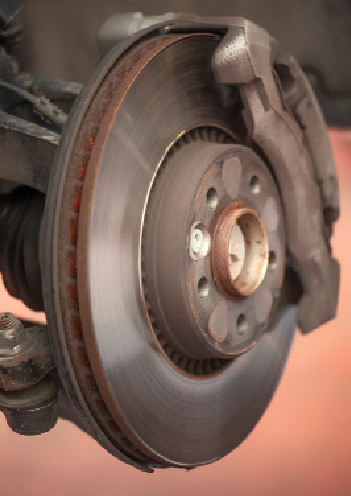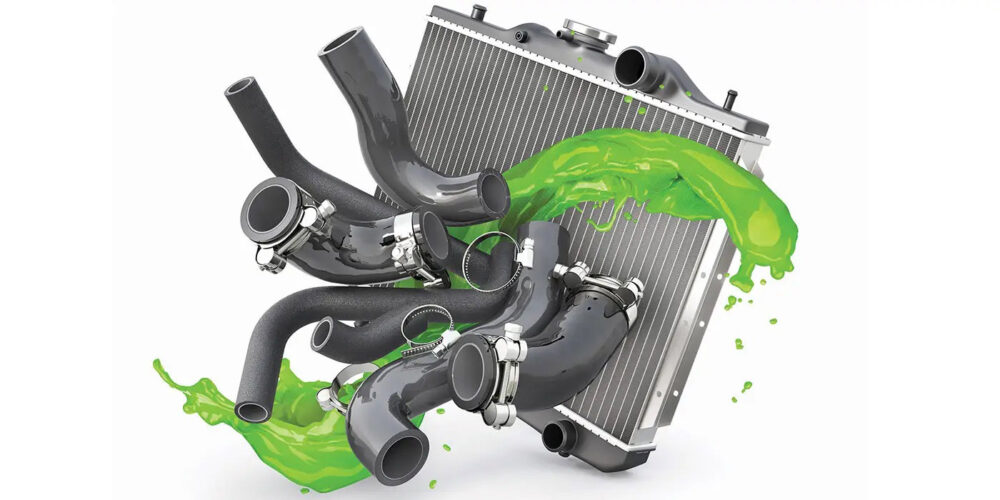 A. Avoid heavy braking or panic stops for the first couple of hundred miles. Normal driving will usually seat in most brake pads just fine, provided the rotors are clean, relatively smooth (no excessive scoring or grooving) and flat (no warpage or pedal pulsations). If the rotors are not in good condition, they need to be resurfaced or replaced.
A. Avoid heavy braking or panic stops for the first couple of hundred miles. Normal driving will usually seat in most brake pads just fine, provided the rotors are clean, relatively smooth (no excessive scoring or grooving) and flat (no warpage or pedal pulsations). If the rotors are not in good condition, they need to be resurfaced or replaced.
Also, the rotors must be clean. This can’t be emphasized enough because dirt, rust, grease, brake fluid or metallic residue left over from resurfacing the rotors can interfere with the seating process and cause noise, pad contamination and/or uneven braking. If the rotors have an oily anti-corrosion coating, wash off the coating with brake cleaner or by scrubbing with a brush and hot soapy water.
If a new set of rotors has an anti-corrosion phosphate coating on the wear surfaces, a few normal stops will rub off most of the coating. Once this coating has worn off, the pads can be seated using the following procedure:
Many brake experts recommend breaking in new brake pads with a 30-30-30 procedure: 30 gradual stops from 30 mph with 30 seconds in between each stop for the brakes to cool. This procedure will prevent the pads from getting too hot until the resins have fully cured.
An alternative 60-20-10 procedure is to gradually brake from 60 mph to 20 mph 10 times with moderate pedal pressure (without coming to a complete stop each time). After the last brake application, accelerate back up to 60 mph and drive for several minutes without braking so the brakes can cool. This should complete the initial bedding of the pads.
Some brake pads come with a special surface “transfer” coating that rubs off the pads and bonds to the rotors as the pads break in. This may leave a light gray coating on the rotors, which is normal.
One thing to avoid with new pads is hard panic stops or high-speed braking until the pads have fully seated. Slamming on the brakes with a brand new set of pads can overheat the pads and rotors, which can glaze the pads. This will make the pads noisy and reduce braking effectiveness.
Q. What do noise reducing brake treatments do?
A. Aerosol “brake quiet” products can be sprayed on the face of the rotors to temporarily reduce brake squeal. The spray leaves a thin film on the rotors that reduces friction and helps dampen pad vibrations and squeal – until it wears off, then it has to be reapplied again.
Anti-noise aerosol brake sprays can often reduce or eliminate an annoying brake squeal with worn brakes, but they won’t provide a permanent fix – and should not be used with new brake pads. The only surefire cure for most brake noise problems is to replace the pads (NAO and ceramic pads are typically quieter than semi-metallic pads), resurface or replace the rotors (a nondirectional finish helps reduce noise), replace worn, missing or corroded disc brake hardware such as pad mounting clips and anti-rattle shims, and to lubricate the backs of the pads, caliper mountings, slides and bushings with high-temperature brake grease.








